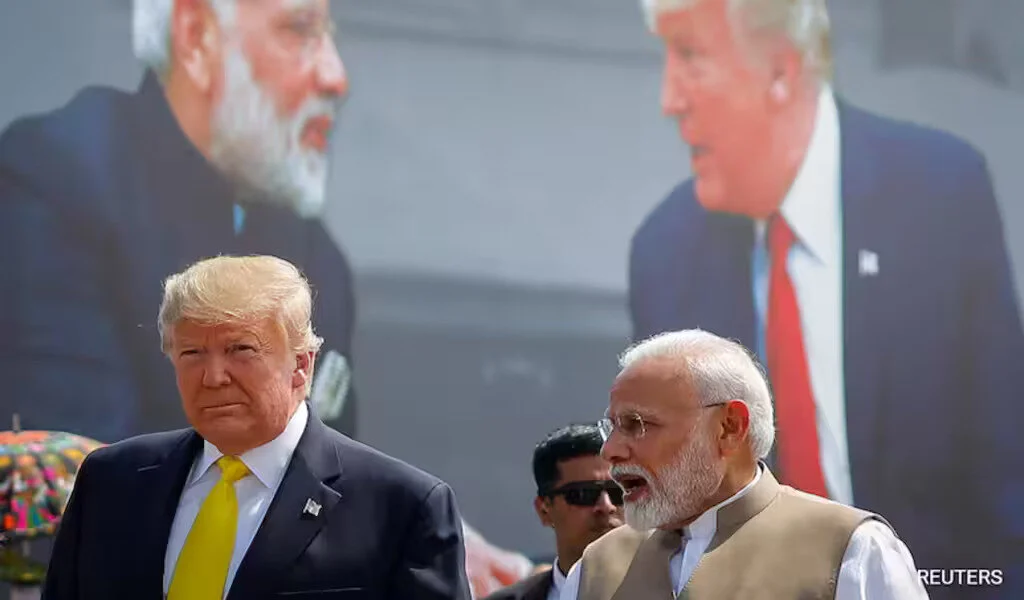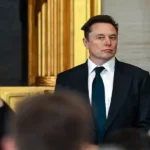(VOR News) – Narendra Modi will visit the United States on February 13 to meet with Donald Trump in an effort to fortify the relationship between the two nations.
Modi’s “official working visit” is the fourth foreign leader to visit the White House since President Donald Trump assumed office on January 20, 2025. This marks the inaugural visit of an Indian prime minister to the United States during the current presidential administration.
Mr. Modi’s visit to the Donald Trump White House on February 12–13 falls during the fourth week of Mr. Trump’s second term. Since assuming office, Mr. Trump has met in private with Israeli Prime Minister Benjamin Netanyahu, Japanese Prime Minister Shigeru Ishiba, and King Abdullah of Jordan.
Donald Trump is now concentrating on his domestic agenda, which includes imposing trade restrictions on several countries and product categories as well as a controversial proposal for Gaza. India is interested in the latter.
Relationship with a person
It is expected that the meeting will be heavily impacted by the personal bond that Mr. Modi and Mr. Donald Trump have developed during their reciprocal trips to each other’s nations.
Both politicians see China and radical Islam as existential dangers and are well-known for their economic nationalism and authoritarian leadership styles. In February 2020, Mr. Trump visited Ahmedabad following Mr. Modi’s attendance at the Howdy Modi event in Houston in September 2019.
Migration and expulsion Donald Trump
The humane treatment of Indian deportees is a significant matter that Mr. Modi may address during his visit. The United States has deported 104 undocumented immigrants from India, with an additional 800 slated for imminent deportation.
India is requesting guarantees from the United States against the mistreatment of its people. Approximately 20,000 of the 7.25 million immigrants residing in the United States have received deportation orders.
This assembly aims to maintain accessible legal pathways for Indians to join the United States for tourism, employment, or education.
Taxes and trade
Trade barriers are one of the main causes of friction in the partnership. Known as a “tariff king” and a “tariff abuser,” Mr. Donald Trump has charged China, Mexico, and Canada with tariffs. Mr. Trump announced that there would be no exceptions to the 25% duty on steel and aluminum imports.
Both the possible loss of market share in the US steel industry and the effect of these tariffs on domestic steel prices are concerns for Indian companies.
India had already lowered the cost of luxury motorcycles and electric batteries prior to Mr. Modi’s arrival. Delhi would be better off negotiating a trade agreement that lowers tariffs and increases market access for both parties.
The two leaders are anticipated to talk about the potential for new agreements and more defense equipment spending.
Indian government authorities and domestic companies are actively in discussions to enhance their imports of U.S.-sourced liquefied natural gas. Mr. Modi might highlight the recent reductions in Indian taxes on luxury American motorcycles and the possibility of lower taxes on goods like pecans and bourbon that are primarily produced in Republican regions.
Connections with China
India holds a special place in the US-India relationship since it is not viewed as a major threat or a traditional ally. In contrast to China, which is viewed as a strategic adversary, and the United Kingdom and Japan, which have had a long-standing alliance, India occupies a unique position.
The US has a more neutral attitude toward India, often refraining from criticizing its partners who are deemed to be “contributing adequately.” A more accommodating attitude toward India has also been adopted by some Donald Trump administration officials, who are known for being antagonistic toward China.
The House of Representatives’ India Caucus was previously chaired by National Security Advisor Mike Waltz, but Senator Rubio pushed for further defense cooperation between the US and India.
When Mr. Modi visits the US, both nations will have a great opportunity to strengthen their relationship and talk about crucial bilateral issues.
At the beginning of Mr. Donald Trump’s presidency, the visit’s main objective is to strengthen ties with the United States rather than resolve long-standing disputes.
SOURCE: NDTV
SEE ALSO:
Many Canadians Think Trudeau’s Too Weak to Deal with Trump
Education Department Contracts Worth $900 Million Have Been Terminated by DOGE.








